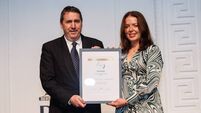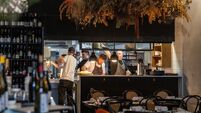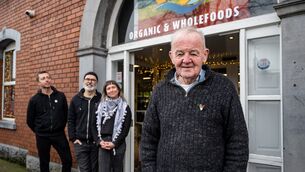Kerala master class
After several false attempts we arrived and peered hesitantly through the open door. We were shown up a dark and dusty timber stairs, where Maria was waiting to welcome us. Her kitchen was small and sparsely furnished. A wire grille and blue muslin curtain divide the functional area from the dining room. Simple wooden shelves held a variety of cooking utensils and pots.
The ingredients for the cooking class were beautifully arranged on the oil cloth covered table. Fresh ginger, shallots, chillies, curry leaves, some fresh seafish, a chicken and two spice tins. One with a variety of whole spices - cassia (as cinnamon is called in Kerala), cardamom, cumin, cloves; the other with a pungent selection of ground spices - turmeric, white pepper, coriander, cumin and chilli powder.
Her beaming assistant Daisy made us two glasses of chai masala, spicy frothy sweet Indian tea, a delicious antidote to the heat and stress of Indian travel.
A long bench with a cushion ran under the grille-covered window and a collection of beautiful old antique chairs and a few plastic chairs surrounded the table. Outside the window, bare-footed builders ran up and down bamboo ladders carrying cement and tiles to fix the roof before the monsoon rains started.
Like most Indian girls, Maria learned to cook from her mother and mother in law. Eventually, after much discussion with her family, she tucked a few tables between the spice and banana trees in the tiny garden beside the house and opened a little café.
Maria cooked the food she knew, the simple south Indian food of the area. Her customers soon began to pester her to show them how she achieved such delicious flavours. Encouraged by her teacher husband, she summoned up all her courage and began to give ‘cookery classes’, charging just a few rupees. She put up a sign in the internet café and so her little business continues to grow. Now she is painstakingly starting to write a little cookbook of her recipes.
First I had a lesson on the basics of Keralan food. We started by making the most well known of all the Keralan vegetable dishes, Thoren. Maria used cabbage as a basis but carrots, beans or pumpkin are also commonly used. Freshly grated coconut is the essential ingredient here; after all, Kerala is the land of coconuts. If your only option is dried coconut, then use half the quantity of unsweetened desiccated coconut.
The spices are ground with a little water with a heavy stone rolling pin on an ammi, a flat grinding stone. The flavour is immeasurably better than machine ground. I would so love to have one at home but they weigh about a hundredweight, so the best I can do is to use a pestle and mortar. The ammi is still widely used in India and is often given to a girl as part of her dowry. Maria is convinced that the final dish tastes better when the spices are stone-ground.
Maria demonstrated how to cook each recipe: Thoren, seared kingfish, fish molley, kerala chicken masala fry, okra pepperfry, rice pullao. She painstakingly explained the reason for adding the spices in a particular order and the crucial importance of raising and lowering the heat as the spices are added.
We pounded the whole spices and massaged them into the fillets of fish and the chicken pieces. The kitchen filled with spicy aromas.
One after the other the dishes were cooked and laid out on the table. We tucked into a feast of Keralan flavours.
When I whispered that it was my friend’s birthday everyone sang Happy Birthday, Granny disappeared into the bedroom and produced her precious home-made wine, and Maria’s daughter was summoned to entertain us. She shyly sang the most beautiful classical Indian songs.
We felt like part of the family rather than paying guests. All of this costs 400 rupees each, about €8.
If you find yourself in Cochin and want to experience a truly authentic local experience, contact Maria at mgeorge24in@yahoo.com. See the rest of the Food section for some of Maria’s recipes:








